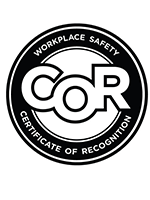Posted: Sep 1 '25

The role of NCSO onsite safety personnel is evolving beyond traditional physical hazard identification to encompass the mental and emotional well-being of workers. This holistic approach not only reduces incident rates but also creates stronger, more resilient workplace cultures. If your organization is ready to enhance your safety evaluation processes with psychological safety integration, contact MI Safety today to explore specialized training programs for your NCSO onsite safety personnel.
Traditional safety evaluations have focused on identifying physical hazards like fall risks and machinery dangers. These are still incredibly important, however, NCSO onsite safety personnel are increasingly recognizing that mental and emotional well-being directly impacts workplace safety outcomes. Workers experiencing stress, fatigue, or emotional distress are more likely to make errors or engage in risky behaviours.
Integrating psychological safety means NCSO onsite safety personnel must assess factors like workload pressure, interpersonal conflicts, and emotional stressors that could compromise safety performance. This expanded perspective requires new observation skills that consider the whole person, not just their physical interaction with workplace hazards.
The integration of psychological safety represents a significant expansion of responsibilities for NCSO onsite safety personnel. While maintaining expertise in traditional safety protocols, these professionals must now develop competencies in recognizing psychological risk factors and understanding how mental health impacts workplace safety.
This doesn't mean NCSO onsite safety personnel become mental health counsellors, but rather that they develop skills to identify psychological risk indicators and connect workers with appropriate resources.

Pulse surveys offer NCSO onsite safety personnel a valuable tool for regularly assessing psychological safety indicators across their worksites. These brief, anonymous surveys can be administered monthly or quarterly to gauge employee stress levels, job satisfaction, and perceptions of workplace support systems.
Peer check-in systems empower NCSO onsite safety personnel to leverage natural relationships between coworkers to identify psychological safety concerns. These systems train employees to recognize signs of stress, fatigue, or emotional distress in their colleagues and provide clear pathways for reporting concerns.
Informal conversations between NCSO onsite safety personnel and workers often provide the most valuable insights into psychological safety concerns. These casual interactions during breaks or routine safety checks can reveal stressors that might not surface in formal evaluations.

Fatigue represents one of the most significant psychosocial risks on worksites. NCSO onsite safety personnel must develop skills to identify both obvious and subtle signs of fatigue, including changes in work pace, increased errors, difficulty concentrating, and altered interpersonal interactions.
Workplace stress manifests in numerous ways that can compromise safety, from increased irritability and poor decision-making to physical symptoms. NCSO onsite safety personnel need training to recognize these stress indicators and understand how they translate into safety risks.
Workplace harassment creates psychological safety risks that can lead to decreased concentration, increased absenteeism, and higher injury rates. NCSO onsite safety personnel play a crucial role in identifying and addressing harassment through their regular safety evaluations and workplace observations.

Organizations that train NCSO onsite safety personnel to integrate psychological safety typically see significant reductions in workplace incidents. When workers feel psychologically safe, they're more likely to report near-misses, ask questions about safety procedures, and engage actively in safety initiatives.
Psychological safety integration dramatically improves workplace morale by demonstrating that the organization values workers as complete individuals. When NCSO onsite safety personnel show genuine concern for mental and emotional well-being, it strengthens trust and engagement across the workforce.
The integration of psychological safety supports long-term employee well-being by addressing mental health concerns before they become
serious problems. NCSO onsite safety personnel who recognize early warning signs can connect workers with employee assistance programs or
workplace accommodations.
Effective training for NCSO onsite safety personnel must cover key psychosocial risk indicators that impact workplace safety, including signs of chronic stress, fatigue, depression, anxiety, and interpersonal conflicts that can compromise safety performance.
Organizations must position psychological safety as a core competency for NCSO onsite safety personnel rather than an optional skill. This requires comprehensive training programs, ongoing professional development, and clear expectations that psychological safety integration is part of the job description.
Mental health risk assessment requires specialized skills beyond traditional safety training. NCSO onsite safety personnel need training in recognizing mental health warning signs and understanding the connection between mental health and workplace safety.

The integration of psychological safety into evaluations represents a fundamental evolution in how NCSO onsite safety personnel approach their vital role. By expanding beyond traditional physical hazard identification to encompass mental and emotional well-being, these professionals become champions for comprehensive workplace safety.
If your organization is ready to enhance your safety evaluation processes with psychological safety integration, contact MI Safety today to explore specialized training programs for your NCSO onsite safety personnel.






